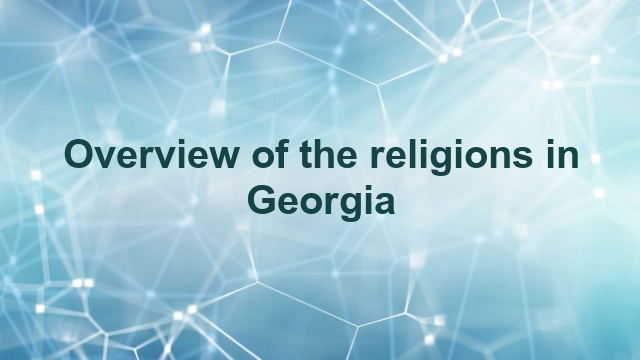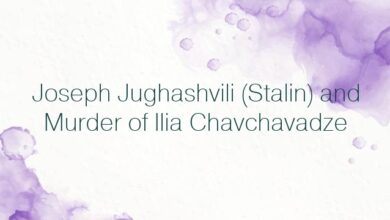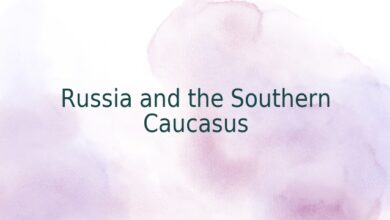
Historically, Georgia has been at a crossroads of major religions and religious movements. In the pre-Christian epoch, pagan religions, Mazdaism, Judaism and elements of Greek and Roman religions existed on the territory of Georgia; eastern Georgia was more under the influence of Mazdaism while the west remained firmly under the Greek and Roman sway. Christianity was introduced and spread in the first-third centuries and was proclaimed the state religion by the early fourth century. By the seventh century, the Georgian and Armenian Christian Orthodox churches split and followed different creeds. Catholicism, historically, had a limited presence in Georgia, with the Franciscan missionaries preaching in the 13th Century and Dominicans arriving in the later years. Still, Georgian rulers had extensive political contacts with the Vatican. In the 7th century, the Arab armies introduced Islam, which shaped Georgian cultural and political life for the next 1,300 years. Protestantism and Buddhism spread in the 20th century but remain limited to small groups.
Currently, 88 percent of the population of Georgia identify themselves as Christians and 83 percent of them are associated with the Georgian Orthodox Church (GOC). Among other Christian denominations are the Russian Orthodox Christians, which also include a small number of adherents of dissident Russian Orthodox schools (the Molokani, Starovery (Old Believers), and Dukhobory (Spirit Wrestlers)), who were exiled to Georgia in the 19th century. The parishioners of the Armenian Apostolic Church constitute approximately 3.9 percent of the population of Georgia and are concentrated mainly in Tbilisi and Samtskhe-Javakheti region. The Roman Catholic Church at present has approximately 50,000 devotees, mainly ethnic Armenians, and some Georgians and Assyrians.
The second largest religious denomination is Islam, which is professed by 9.9 percent of the population. There are three main Muslim populations: ethnic Azeris, ethnic Georgian Muslims, and ethnic Chechen Kists in northeastern Georgia. There are four large madrassahs (religious schools) attached to mosques in eastern Georgia, two of which are Shiite and financed by Iranian religious groups, and the remaining two are Sunni, funded by Turkish religious groups. There are also several smaller madrassahs in Adjara that are financed by Turkey.
Judaism has been present in Georgia since the antiquity and, at one time, was practiced in Jewish communities throughout the country. However, the number of Jews residing in Georgia declined sharply following the 1990s and currently less than 4,000 Jews reside in Georgia, mainly in the largest cities of Tbilisi and Kutaisi.
There are several smaller religions denominations present in Georgia. Baha’is, Hare Krishnas, and Buddhists have recently gained some converts but their numbers remain small and limited to urban centers. A small number of Kurdish Yezidis (approximately 18,000) have lived in Georgia, mainly in Tbilisi, for centuries. Since the 19th century, the Russian authorities settled large numbers of Protestant Germans in Georgia but currently their numbers remains low; Lutheran worshipers number fewer than 1,000, Baptists, among them Russians, Georgians, Armenians, Ossetians, and Kurds, total approximately 8,000 adherents while Pentecostals, Seventh-day Adventists, the New Apostolic Church and the Mormons have several hundred of devotees. The Jehovah’s Witnesses claim to have as many as 16,000 adherents but official estimates put their numbers much lower.
Georgia historically enjoyed a reputation of tolerance and foreigners visiting Tbilisi are usually guided to the old city where a mosque, a synagogue, Armenian and Georgian churches and ancient Avesta shrines all share space of about two square kilometers. There was no historical pattern of anti-Semitism in the country and the 2,600 years of the Georgian-Israeli relations were celebrated in the late 1990s. Relations between Sunni and Shiite Muslims are genial.
Nevertheless, in recent years, this reputation was somewhat tarnished by increasing conservatism and hostility towards non-Georgian Orthodox denominations. One of the reasons lay in the Georgian attitude towards Orthodox Christianity. While many residents are not particularly observant, Orthodox Christianity and national identity are perceived inseparable. A small Christian nation in the midst of non-Christian empires, the Georgian identity, the “Georgian-ness” itself, was equated with being an Orthodox Christian and ethnic Georgians, who converted to other religions or denominations, were, and still are, scorned. Such attitudes were reflected in the slogans of the late 19th century national-liberation movement, which rallied the populace under the slogan of “mamuli, ena, sartsmunoeba [fatherland, language and faith]” where faith implicitly stood for the Georgian Orthodox Christianity. In the late 1980s and early 1990s, the slogan was slightly modified to “ena, mamuli, sartsmunoeba” (language, fatherland and faith), which made emphasis on the Georgian language as a rallying point for Georgian nationalism but retained the Georgian Orthodox Christian faith as an essential component.
While maintaining their historical tolerance toward religious minorities, the Georgian society and GOC both have been wary of the spread of proselytizing Protestant religions, especially the Jehovah’s Witnesses, Seventh-day Adventists and Pentecostals, and argue that these groups exploit the dire economic conditions in Georgia to gain converts through financial aid. Evangelical Protestants are often described simply as “sects” and a threat to the national and cultural values. A June 2005 survey revealed that 73 percent of respondents believed that the Jehovah’s Witnesses create serious problems for society and 87 percent felt this group should be banned.
One aspect of this problem stems from property disputes between the GOC, Armenian Apostolic and the Roman Catholic churches, but especially between the first two. Over almost 1,700 hundred years of coexistence, the Georgian and Armenian churches often shared or took over churches and other religious facilities that once belonged to other. The two churches are involved in bitter disputes over churches in Tbilisi, Samtskhe-Javakheti and eastern regions of Georgia, where both Georgian and Armenian clerics accuse each other of purposely altering existing churches so that they would be mistaken for Armenian or Georgian religious facilities. Both the Armenian and Roman Catholic churches have had difficulty obtaining permissions to construct new churches due to influence from the GOC. Similarly, the Jewish community also struggled to restore property confiscated during Soviet rule. Despite the Supreme Court ruling in favor of the Jewish community in 2001, a theater group still has not vacated the central hall of a former synagogue in the old part of Tbilisi. Relations between the GOC and the Russian Orthodox Church are also marred by the larger political context of Russo-Georgian interaction in Abkhazia and South Ossetia regions. In particular, the GOC accused the Russian Church of supporting web sites that encourage Abkhaz secessionist sentiments and training Abkhaz priests loyal to the Kremlin.
In recent years, the GOC shied away from the ecomenical movements. Conservative elements in the church forced Catholicos-Patriarch Ilia II to withdraw the Georgian church from two major ecumenical bodies, the World Council of Churches and the Conference of European Churches, in 1997. Conservative organizations like Jvari and the Society of Saint David the Builder often spearhead these traditionalist tendencies. While the GOC and the Georgian authorities publicly denounced any harassment of religious minorities, they also took no measures to persecute perpetrators and prevent future attacks. The most prominent example of such practices remains the actions of the excommunicated Orthodox priest Basil Mkalavishvili, whose supporters (popularly known as “Basilists”), perpetrated a number of attacks, some of them violent, against nontraditional religious minorities, including Baptists, Seventh-day Adventists, and, most of all, Jehovah’s Witnesses. Under international pressure, the Georgian authorities were finally forced to react and Mkalavishvili was sentence to six years imprisonment in 2005. Nevertheless, sporadic harassment of nontraditional religions continues since some local Orthodox priests organize their parishes against the minority religious groups and lead opposition to constructing places of worship or holding religious services. The Catholic Church also continues to face difficulties in attempting to build churches in the towns of Kutaisi, Akhaltsikhe, Chiatura, and Ozurgeti.
The Georgian Constitution provides for freedom of religion and obligates the government to respect and treat equally all religious denominations. The separation of church and state is established but the Constitution also recognizes the special role of the Georgian Orthodox Church in the country’s history. In 2002, the Georgian parliament ratified a concordat with the Georgian Orthodox Church granting it a privileged status compared to other religions based on the church’s contributions to the history and culture of Georgia. The Concordat secured the GOC’s tax-free status and granted it the exclusive right to the military chaplaincy as well as the authority over decisions on historical church property. The GOC also received a consultative authority in the sphere of education, which effectively made all religious literature, including non-Georgian Orthodox, subject to the approval by the GOC. Although the Roman Catholic, Lutheran, Baptist and Armenian Apostolic churches and representatives of the Jewish and Muslim communities signed agreements with the GOC agreeing to the Concordat, they later disputed some of the its articles.
Alexander MikaberidzeSearch …





